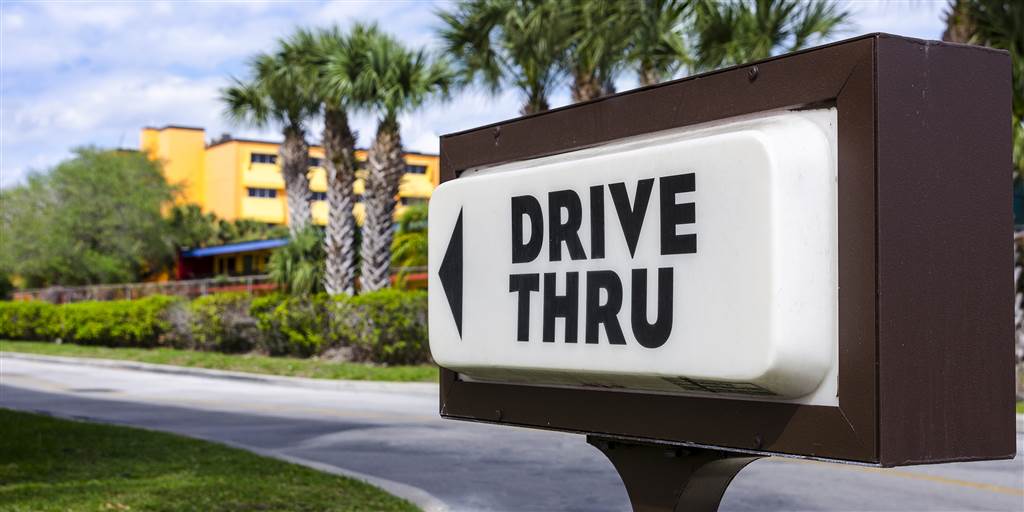Opening a Fast Food Franchise: Obtaining Permits

With the current pandemic, dining in has become almost non-existent. Until the current climate passes, for many U.S. citizens, our only option left is to either cook at home, get takeout, or drive-thru.
According to Grand View Research, the global fast food and quick service restaurant market, “is expected to grow at a compound annual growth rate of 5.1% from 2020 to 2027 to reach USD 383.81 billion by 2027.” This large growth means that thousands of first-time franchisees will be experiencing the task of opening their first location. To receive a permit for your franchise may sound simple, but with budget cuts in local government offices and stay at home orders, the timeline to receive a permit has skyrocketed. It has never been more difficult to navigate a jurisdiction. Using the help of an experienced professional can result in time and money saved, but if you are set on doing it yourself, we have compiled a small guide to provide tips on what you may need to look for.
Keep in mind as you are reading this that every jurisdiction has different guidelines and requirements. Doing research on your city is crucial if you want to side-step common errors that could set you back weeks. Check out our Resources Page for guides on customary steps during the permitting process.
For this guide, we are going to focus on our hometown: Los Angeles.
Site Selection:
As you plan out your dream location for your franchise, you need to add these considerations to your list. Along with market research, customer foot traffic, and more, you will also have to keep this in mind regarding obtaining permits:
- Zoning cases
- Grading
- Geological Soil Reports
- Disaster Inspections
- Code Enforcement Violations
- If there are any current open applications for this location with the city
Finding the perfect site that provides minimal complications for permit approval can be difficult, but the proper forethought before starting the permitting process can save you a headache down the road when it turns out your location is on damaged land.
Zoning Requirements
Zoning requirements tend to vary with each election year. Differing parties have differing opinions on what they think is the best way to handle zoning in their city. Luckily, each city has a full handbook that is updated regularly and with which you can familiarize yourself before submitting a permit.
- In most cases for a Fast-Food Franchise, a Conditional Use approval is required when a site is on a lot across the street from a residential zone or residential use. This means if the drive-thru is too close to a residential neighborhood or residence, even if it is zoned for commercial, a conditional use approval will need to be obtained. In this case, a hearing is held for the residents to decide if they want a drive-thru at that location.
- If the lot and surrounding areas are in a common zone, then a use variance is required which usually simplifies the matter.
Development Standards
This is an example of common standards that a district may have for building a drive-thru.
- Drive-through aisles shall have a minimum ten (10′ 0″) foot interior radius at curves and a minimum twelve (12′ 0″) foot width.
- Drive-up windows and remote tellers shall provide at least one hundred eighty (180′ 0″) feet of stacking space for each facility, as measured from the service window or unit to the entry point into the drive-up lane. Nonfood and/or non-beverage businesses may reduce the stacking space to a minimum of sixty (60′ 0″) feet.
- Each entrance to an aisle and the direction of traffic flow shall be clearly designated by signs and pavement markings.
- When located on a site within one hundred (100′ 0″) feet of any residential property (measured from the nearest property lines), hours of operation for the drive-up/drive-through service shall be limited from 7:00 a.m. to 10:00 p.m. daily. If the use is located greater than one hundred (100′ 0″) feet from residential use, then there are no restrictions on the hours of operation. The designated approving authority may grant exceptions through a conditional use permit after the preparation of a qualified noise study.
As stated, those are just a couple of common standards for a drive-thru establishment. Remember that it is important to research your local guidelines to fully prepare yourself for building your location. Due Diligence is what makes or breaks the permitting process.
Site Plan Reviews
Site plan reviews are time-consuming and require preparation, which means that clients tend to like to avoid them. However, when it comes to drive-thru construction, Los Angeles outlines two clear requirements that would trigger a Site Plan Review:
- Any change of use to a drive-thru fast-food establishment results in a net increase of five-hundred or more average daily trips as determined by the Department of Transportation.
- Any change of use to a fast-food establishment that is not a drive-thru which results in a net increase of 1,000 or more average daily trips as determined by the Department of Transportation.
In both cases, a study conducted by the Department of Transportation is required to complete your site plan review.
Plan Approvals
Existing restaurants that have a drive-thru will be classified as having deemed to be approved conditional use status. Modifications to expand the drive-thru shall be subject to a “Plan Approval” by city planning. In other words, once there is a drive-thru already in place then the Planning department will only get involved if you’re expanding the restaurant in some way or if it intensifies the use. Luckily, this distinction can save you an exhausting process and you are one step closer to opening your new Franchise to the public.
Permitting
Once the entitlements and land use portions are completed for your drive-thru, the permitting process is like the permitting process of any other type of establishment. It is important to note, that you may have to package different aspects in separate permits. For example, parking and signage will be a separate permit from any Tenant Improvement permits.
To further familiarize yourself with the permitting process, check out our other blogs or our resources page.




